| CONSTANCE MEYER Articles |
|
Auer to Heifetz to ...
At age 89, master violinist Abram Shtern keeps his impressive musical lineage going through a host of adoring students. November 02, 2008 | by Constance Meyer | The Los Angeles Times
When we began our notes were very sour -- Until a man, Professor Auer, Set out to show us, one and all, How we could pack them in, in Carnegie Hall.
Which brings us back to Shtern: Born in 1918 in Kiev, in what is now Ukraine, and an L.A. resident since 1990, he studied with David Berthier, who in turn had studied with Auer. Shtern is a frail man today. He speaks little English. But the portrait of him that emerges from conversations with violinists he has coached is of the ideal teacher: not only a professional instructor but a life inspiration.
'Last of Mohicans' Reminiscing via his daughter, Ludmila Shtern, Shtern said recently that his inauspicious violin roots began with his pummeling a klezmer player, a Jewish folk violinist who had come to the Shtern household to instruct little Abram. Shtern, it was observed, had a very fine ear and a sensibility to match. Luckily, the klezmer player took a hint. But on his way out, he noted that Shtern had talent and recommended violin lessons.
Kirillov, 52, knew about Shtern long before he had the courage to play for him at age 19. Until then, he recalls, "I played guitar in a band, football, pretty much everything except practicing. He didn't push me. He just told me how it might be and showed me some different way in this life. So when I left his house that day, after three hours, I was a completely different person."
Kiev is 68 miles south of Chernobyl, the site in 1986 of the worst nuclear power plant disaster in history, whose fallout was far greater than that released in the bombings of Hiroshima and Nagasaki. Afterward, according to Kirillov, "it was an absolutely forbidden subject. Everything was hidden from people. Even now, nobody knows the whole truth. All I can say is it was extremely bad, especially for children." The Shtern family, his daughter said, decided to immigrate to the United States and was finally able to do so in 1989. Elizabeth Wilson, 48, a freelance violinist and violist who frequently subs with the Los Angeles Philharmonic, explains that at the time, "Russian Jews leaving Russia, depending on whether they were going to Israel or the States, had to stay in some kind of holding station. The ones going to the States stayed just outside Rome for about three months, until their visas were in order, and that's when I was living in Italy." Wilson was staying in a Russian household, and "we had a lot of Russian guests coming through. Abram was one of them." He even taught some master classes, "and so I played for him. It was life-changing." Shtern, Wilson says, wanted her to hold her violin differently, with the neck resting deep in the space between her left thumb and index finger. "I have to say the first two weeks were two of the worst weeks of my life," she says, "because when you grow up doing something -- I was 28 -- it was like starting over. I only saw black. And then it started to get better, and the end result is it's a lot more freedom, a lot more relaxing." In fact, Wilson wound up leaving Italy "to come study with Abram" in Los Angeles.
Bow technique Shtern's reputation was reflected in the high caliber of students presented to him during a public master class he taught in Montecito. A young Korean violinist, for instance, played the daunting third movement from the Sibelius Violin Concerto, after which Shtern and Emanuel Borok, the Dallas Symphony concertmaster and Shtern's translator, tried to communicate a different bowing to her. But clearly the student did not understand the request. "Does she speak English?" Borok asked the festival's director, violinist Chan Ho Yun, who was seated across the room from the two Russians. Yun shook his head and quickly made his way to a seat next to Borok. Shtern then played the Sibelius section with the bowing he had recommended and Borok explained it in English to Yun, who translated Borok's explanation into Korean. The student smiled, now understanding what was being asked of her, and complied. Everyone in the audience breathed a sigh of relief.
Polesitsky, who went to Shtern in 1974, explains: "If you can imagine, for all of us in the Soviet Union, 'freedom' was not the most popular word, even in violin school. Everyone was teaching in a very standardized way. Abram kind of overturned all of that. The most important aspect for him is freedom. He was kind of a guru of freedom." Says Kirillov: "If you stand on stage like a statue, as if you're going to lift a very heavy weight or something like that, you cannot play. Your approach when you come out on the stage to play a concert, it's not like you're going to beat some world record. This is what he told me. It's like you come out and you say, 'People, let me tell you something.' Given that the violin is an instrument famous for its hazards, a teacher who promises stress-free playing is either a charlatan or a miracle worker.
But for Polesitsky, "Abram was showing by his phenomenal playing that such a freedom was within our reach. There were no shoulder rests, which he called crutches, no special mechanical movements, just a surprisingly easy,
under-his-guidance search for a free, open sound and a natural, relaxed left hand."
|
|
|
Copyright 2008 Constance Meyer. All rights reserved
|
|
|
|
|
|
|
|
|
|
|
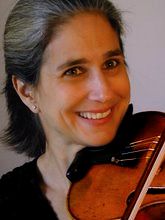
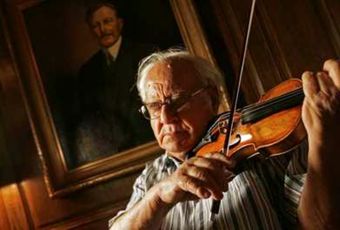 MONTECITO, CALIF. — Apart from a select group of musicians, few people have heard of the violinist
MONTECITO, CALIF. — Apart from a select group of musicians, few people have heard of the violinist
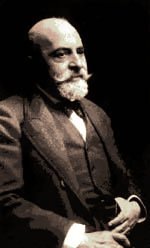 The world is jampacked with violin teachers. But there was only one Auer, a Hungarian who in 1868 signed a
three-year contract at Russia's St. Petersburg Conservatory and then went on to exceed that contract by 46 years before coming to the U.S. in 1917. Besides Heifetz, a partial list of the astonishing roster of his proteges, sometimes known as the "Auer Gang," includes Mischa Elman, Tosha Seidel, Efrem Zimbalist and Nathan Milstein. So influential was
The world is jampacked with violin teachers. But there was only one Auer, a Hungarian who in 1868 signed a
three-year contract at Russia's St. Petersburg Conservatory and then went on to exceed that contract by 46 years before coming to the U.S. in 1917. Besides Heifetz, a partial list of the astonishing roster of his proteges, sometimes known as the "Auer Gang," includes Mischa Elman, Tosha Seidel, Efrem Zimbalist and Nathan Milstein. So influential was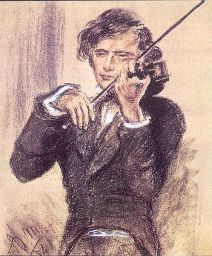 Great violin teachers, like great racehorses, frequently boast a distinguished lineage, and Auer was no exception. He had been a student of the Hungarian violinist
Joseph Joachim, a mentor and muse of Brahms, Dvorak, Bruch and Schumann.
Great violin teachers, like great racehorses, frequently boast a distinguished lineage, and Auer was no exception. He had been a student of the Hungarian violinist
Joseph Joachim, a mentor and muse of Brahms, Dvorak, Bruch and Schumann.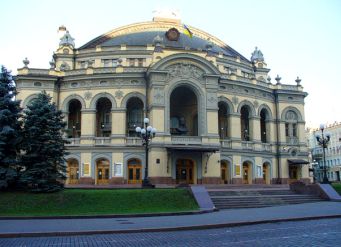 Eventually, Shtern became assistant to Berthier at the Kiev Conservatory. As concertmaster of the
Eventually, Shtern became assistant to Berthier at the Kiev Conservatory. As concertmaster of the
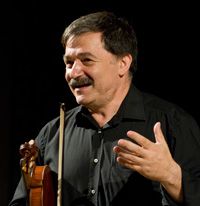 Another former Shtern student,
Another former Shtern student,
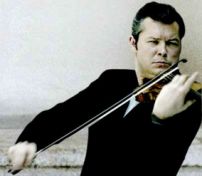 Violin pedagogy is passed down from teacher to student in part verbally and in part by demonstration. Violin masters have direct contact with younger generations, as they encounter them in master classes, and are sought out by
up-and-coming players seeking guidance and their imprimatur. As Wilson puts it: "Shtern has continued to be involved with today's concertizing violinists, has developed relationships with the younger generation, such as Julian Rachlin and
Violin pedagogy is passed down from teacher to student in part verbally and in part by demonstration. Violin masters have direct contact with younger generations, as they encounter them in master classes, and are sought out by
up-and-coming players seeking guidance and their imprimatur. As Wilson puts it: "Shtern has continued to be involved with today's concertizing violinists, has developed relationships with the younger generation, such as Julian Rachlin and
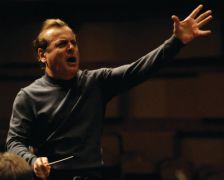
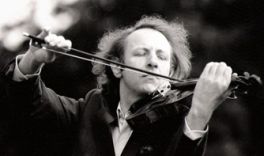 is that he pronounced Tchaikovsky’s violin concerto, originally dedicated to him, unplayable.
Tchaikovsky rededicated the concerto to Adolph Brodsky. Ironically Auer was in part responsible for getting the piece “out there”
since he taught it to all his concertizing students.
Today, every serious violin student must learn the piece, and it is a must at the Tchaikovsky violin Competition in Moscow. Continuing this tradition of excellence, Shtern has taught a number of Tchaikovsky Competition winners,
including
is that he pronounced Tchaikovsky’s violin concerto, originally dedicated to him, unplayable.
Tchaikovsky rededicated the concerto to Adolph Brodsky. Ironically Auer was in part responsible for getting the piece “out there”
since he taught it to all his concertizing students.
Today, every serious violin student must learn the piece, and it is a must at the Tchaikovsky violin Competition in Moscow. Continuing this tradition of excellence, Shtern has taught a number of Tchaikovsky Competition winners,
including
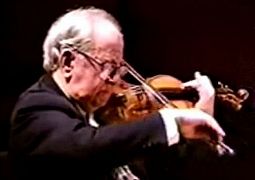 Today, three months after the tribute in Montecito -- where there were also two recitals in his honor, one given by
students and the other by faculty members --
Today, three months after the tribute in Montecito -- where there were also two recitals in his honor, one given by
students and the other by faculty members --